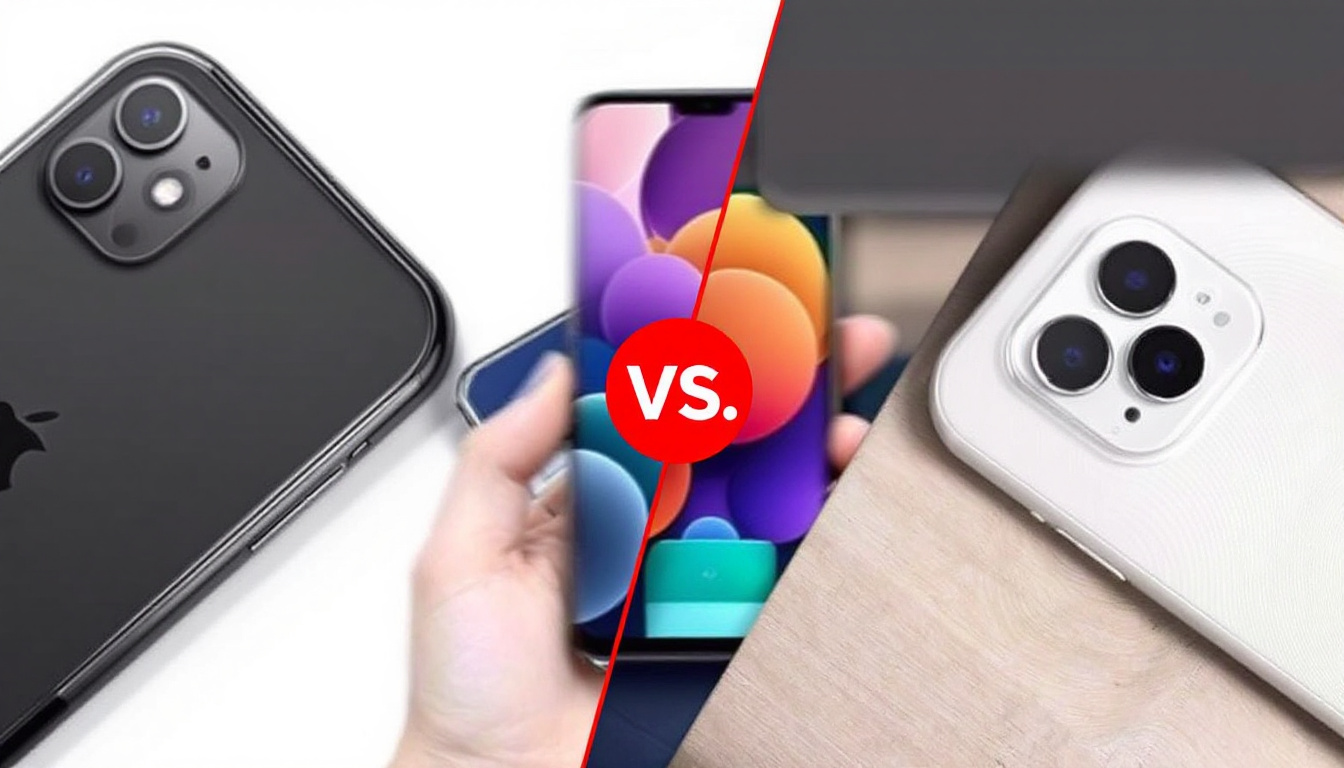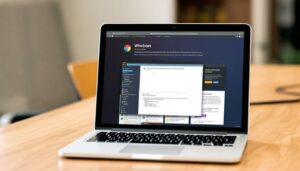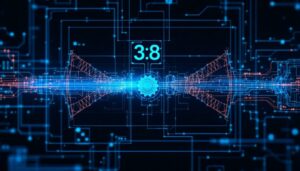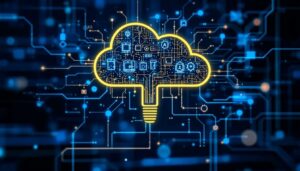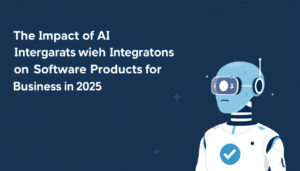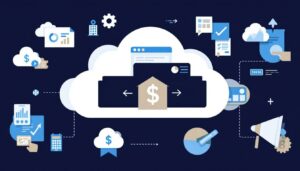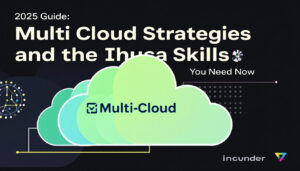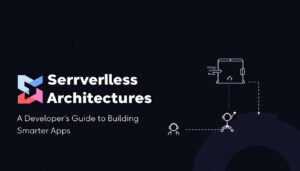Choosing between the iPhone 2025 and top Android flagships is more complex than ever. Each new release introduces features that reshape workflows, compatibility, and security. For IT professionals, developers, electronics enthusiasts, and business leaders, choosing a device goes beyond personal preference. In today’s fast-paced mobile market, it’s a strategic investment.”iPhone 2025 vs. Top Android Flagships”.
This analysis provides a direct comparison of what the latest iPhone and leading Android smartphones offer. Key focus areas include hardware performance, software capabilities, productivity tools, and ecosystem integration. Understanding these distinctions helps business and tech decision-makers select the most effective device for their needs. If you also manage data across platforms in your environment, you may find our review on the latest cloud storage options, such as Google Drive and OneDrive, a useful resource HERE.
This side-by-side review equips you with clear insights, so you can make an informed, confident choice in a fast-evolving mobile market “iPhone 2025 vs. Top Android Flagships”.
Design, Build Quality, and Display Technology
The physical aspects of today’s flagship smartphones hold more significance than ever for professionals. Durable build, ergonomic form, and advanced displays drive long-term value and daily usability in high-pressure environments. Comparing the iPhone 2025 and top Android models reveals where design decisions align—and diverge—across platforms.

Materials and Build Quality
Apple has maintained its focus on premium materials in the 2025 iPhone lineup, continuing with aerospace-grade aluminum and ceramic shield glass. Reports suggest new models such as the rumored iPhone 17 Air are both lighter and thinner, yet retain robust scratch resistance and IP68 water and dust certification. This measured evolution keeps the iPhone attractive for executives and field professionals who expect reliable durability without extra weight.
Android flagships from Samsung, Google, and Xiaomi have also raised their standards. Leading models like the Samsung Galaxy S25 Ultra and Google Pixel 10 Pro use a mix of Gorilla Glass Victus 3, strengthened aluminum, and polished ceramic. Many Android devices now offer equal or greater resistance to daily impacts and moisture, bridging the gap between aesthetics and endurance.
Form Factor and Ergonomics
Ergonomics impact productivity during prolonged use. The iPhone 2025 introduces even narrower bezels and a contour that rests comfortably in most hands, providing a secure feel with one-handed operation. Slimness without sacrificing grip is a recurring trend, as seen in rumored details from recent Apple iPhone design reports.
Android manufacturers compete by diversifying form factors:
- Ultra-slim bodies: Thin folding displays, notably in Samsung’s and Oppo’s foldables, allow for pocketable designs while expanding screen space.
- Curved edges: Devices like the Xiaomi 15 Pro soften edges and reduce pressure points.
- Flat vs. curved screens: Both camps now offer flat and curved options, letting professionals select based on comfort and work needs.
Both Apple and Android makers address one-handed use, but Android offers more variety in screen sizes and styles, catering to different preferences.
Durability for Professional Use
Business settings demand low failure rates. Apple’s ceramic shield and Android’s Gorilla Glass Victus deliver resilient performance during drops and bumps. IP rating parity means both ecosystems offer strong protection against water, dust, and accidental spills—a must for professionals in mobile, outdoor, or industrial roles.
For a deeper look at how shifts in consumer expectations shape product durability and appeal, see our analysis on how consumer trends influence digital product design.
Display Technology and Advancements
Display innovation shapes the way professionals interact with their devices. The 2025 iPhone includes Super Retina XDR OLED panels across all models, now supporting up to a 120Hz ProMotion refresh rate and higher peak brightness for outdoor readability. Reports indicate Apple is rolling out newer M14 OLED technology that further reduces glare and improves color accuracy, setting a standard for clarity and fidelity (Apple iPhone 17 display upgrades).
Android’s top models are equally advanced:
- Samsung Galaxy S25 Ultra: Uses Dynamic AMOLED 2X, QHD+ resolution, and adaptive refresh rates from 1Hz to 120Hz.
- Google Pixel 10 Pro: Focuses on extreme color accuracy, including HDR10+ support for creators.
- Xiaomi 15 Pro: Integrates ultra-thin, energy-efficient OLED, offering lower power draw and sustained high brightness indoors or outdoors.
Display enhancements like eye comfort modes, anti-flicker tech, and minimized punch-hole cameras are now standard in both iPhone and Android flagships.
Professional Usability and Appeal
All these design choices add up to devices that feel reliable and polished in any professional context. Apple’s consistency appeals to those who value stability and minimalist aesthetics. Android’s variety caters to users seeking either a traditional or experimental approach in their daily workflow. Both platforms supply hardware that can withstand intensive tasks while presenting information clearly, whether reviewing presentations, coding, or video conferencing.
For professionals evaluating which device to trust for daily demands, each flagship’s design and display choices reflect a high standard—and a recognition that physical experience is as integral as technical specs.
Performance, Hardware, and Battery Life
The competition between Apple and Android in 2025 has sharpened, especially for professionals who demand more from their devices. A device’s raw power, memory, internal storage, and endurance each play a direct role in day-to-day productivity, whether running applications, managing cloud services, or staying connected throughout the workday. This section provides a balanced review of the iPhone 2025 and leading Android phones, focusing on real-world performance and operational longevity.
Processor Technology and Performance
Apple continues to lead in mobile silicon with its custom-designed chips. The iPhone 2025 is powered by the latest Apple Silicon, likely an A19 or equivalent series. This processor delivers efficient computing with a focus on both power and heat management. Users benefit from industry-leading single-core figures and multi-core performance that meets the demands of engineers, developers, and those running workflow-intensive applications.
Android flagships utilize a mix of Snapdragon and Exynos processors. The 2025 Samsung Galaxy S25 Ultra and Google Pixel 10 Pro both employ next-generation chipsets with advanced 4nm or 3nm technology. While benchmarking shows Apple’s Silicon slightly ahead in low-latency operations, recent performance reviews highlight how top Snapdragon chips in Android devices have closed the gap in multi-threaded and AI-driven tasks.
Real-world testing reflects this parity. Tasks like exporting 4K video, compiling code, or running virtualization apps execute with near-identical results on both platforms. Thermal regulation remains a strong suit for iPhones, providing sustained performance without noticeable slowdowns.
RAM Configurations and Storage
Professionals rely on quick app switching and multitasking. The iPhone 2025 offers up to 12GB RAM across its Pro models, a notable increase ensuring robust background process management. Storage begins at 256GB, scaling to 1TB on higher-end variants, supporting large file handling and local dataset storage.
Android phones offer greater flexibility. Many top models supply options between 8GB and 16GB RAM, sometimes extending to 24GB in certain configurations. This surplus aids heavy multitasking, memory-intensive apps, and long browser sessions with many open tabs. Storage on Android starts at 256GB with selections up to 1TB, and USB-C SSD compatibility still gives Android users an extra edge for rapid file transfer and physical backup.
Unlocked storage expansion, offered via microSD in select Androids, supports individualized workflows where large databases or offloaded media are frequent requirements.
Speed Tests and Real-World Experience
In practical, on-the-job usage, both iPhone and Android flagships perform admirably. Loading enterprise apps, encrypting documents, or editing high-resolution content shows negligible delay on either side. High refresh rate displays maintain responsive navigation and input feedback, crucial when moving between emails, project plans, or collaborative software.
Network performance metrics reveal strong results in Wi-Fi 7 and 5G support on all major devices. File sync, video calls, and secure access to remote desktops remain smooth regardless of platform, as confirmed by multiple independent reviews of Android phones.
Battery Life and Charging Capabilities

Battery longevity remains one of the top priorities for professionals. The iPhone 2025 has a slightly larger battery compared to previous models, paired with improved efficiency from its processor and display. Users can confidently move through a full workday with heavy app usage. Reputable sources like CNET report all-day battery levels for iPhone 16 Pro Max and newer, setting the expectation for the 2025 lineup.
Android flagships approach or match these results, notably in devices like the Samsung Galaxy S25 Ultra and Google Pixel 10 Pro, which feature batteries up to 5,500 mAh and adaptive display sync for power optimization. Advanced fast-charging is also standard; several Androids hit a 50% charge in under 20 minutes with included adapters, a small but significant advantage for professionals needing quick top-ups.
Wireless charging remains present on both platforms, while Apple’s MagSafe continues as a favored standard for reliability and accessory options.
Battery Health for Long-Term Use
As devices mature, battery health turns into a crucial consideration for any professional planning multi-year deployments. Apple offers battery optimization tools, performance management, and clear battery health indicators. For iPhone users experiencing rapid drain, our practical guide on managing iPhone battery life presents actionable steps to maximize longevity, such as adaptive brightness and optimized charging schedules.
Android battery health varies more due to a wider variety of hardware vendors. However, most premium models now embed health monitoring in their OS and support adaptive charging to slow battery degradation. Careful calibration and better heat dispersion extend service life.
For broader context on balancing productivity and battery life across all work devices—including laptops—see our comparison of MacBook Air models, where battery duration is also a key differentiator (MacBook Air M2 vs M3: Is the Upgrade Worth It in 2025?).
Summary of Key Features
When comparing iPhone 2025 and flagship Androids in performance, hardware, and battery life, both sides deliver reliable, consistent power for the demands of professionals. Chip advancements, improved memory, and efficient charging routines give confidence that either choice can support intensive modern workflows, from on-the-go field operations to secure corporate access. Hardware and software refinements seek to keep users productive all day, with clear solutions for maintaining performance even as devices age.
Software Ecosystems, Security, and Developer Tools
The iPhone 2025 with iOS 19 and the latest Android flagships running Android 15 both reflect mature, deeply integrated ecosystems. For decision-makers and developers, system updates, device compatibility, security, privacy, and access to developer tools carry real operational impact. Reviewing each segment helps clarify how Apple and Android platforms address professional needs, from everyday security to supporting application development.
Operating Systems and Ecosystem Integration
Apple’s iOS 19 marks a steady evolution in system design and integration. Major updates focus on expanding Apple Intelligence features and customization, improving synergy between iPhone, Mac, and iPad. The Apple ecosystem offers consistent update cycles—usually 5-6 years of support—ensuring long device life. When connected to AirPods, Apple Watch, or Mac, handoff and continuity features drive frictionless workflow transitions. New features in iOS 19, including deeper Siri integration and improved RCS messaging, are covered in depth at TechRadar’s iOS 19 feature overview.
Android 15 emphasizes wide device compatibility and cross-brand collaboration. Google prioritizes update uniformity among its Pixel devices, while manufacturers like Samsung and Xiaomi continue investing in longer update guarantees. Android 15 brings multitasking improvements and “Private Space” for sensitive apps across tablets and foldables, as described in Google’s Android 15 summary. Enhanced integration between Android smartphones, Chromebooks, and smart home devices remains a key benefit.
Both platforms have refined their update experiences, but Apple’s singular hardware-software approach provides a more uniform system for professionals managing mixed fleets.
Security Features and Privacy Protections
Security is fundamental to both iOS and Android, and each platform advances its features with every release.
- iPhone 2025 and iOS 19: Apple maintains a reputation for robust privacy and layered protection. iOS 19 adds rapid security responses, end-to-end encrypted messaging, passkeys, and continuous vulnerability patching. Corporate users benefit from in-depth management controls via Mobile Device Management (MDM). Apple’s security releases are tracked centrally at Apple security releases.
- Android 15 Flagships: Android 15 introduces new theft protection measures, advanced app permission management, and a dedicated “Private Space” for sensitive content. Security updates have become more regular, and enhanced encryption aims to rival iOS. Device security on Android now includes locked-down sensitive settings and improved biometrics, as seen at Google’s official Android 15 update page.
Internal threats, such as unauthorized app access, are managed with tighter sandboxing and app vetting in both systems. If your business manages sensitive information, you may consult our privacy guidelines and practices at Privacy Policy – the spartane.
Android’s open nature has required more frequent responses to emerging threats, but scheduled updates and stronger Play Store protections now close the historical security gap with Apple.
Update Cycles and Support
Strong update policies reduce exposure to vulnerabilities and help control long-term device management costs. Apple provides software updates to its devices for an industry-leading duration. Supported iPhones regularly see five or more years of security and feature updates. This predictability benefits enterprise environments and regulated industries.
Android has improved in recent years, particularly with Google-branded devices, which now receive up to seven years of operating system and security updates. Samsung and others are moving in a similar direction. However, deployment timing can still vary depending on device manufacturer.
- Summary Table: Update and Support Platform Years of Support Typical Update Delivery iPhone (iOS) 5-6 Immediate, all users Android Pixel Up to 7 Staged, rolling release Samsung/Other 3-7 (varies) Manufacturer-scheduled
Developer Tools and APIs
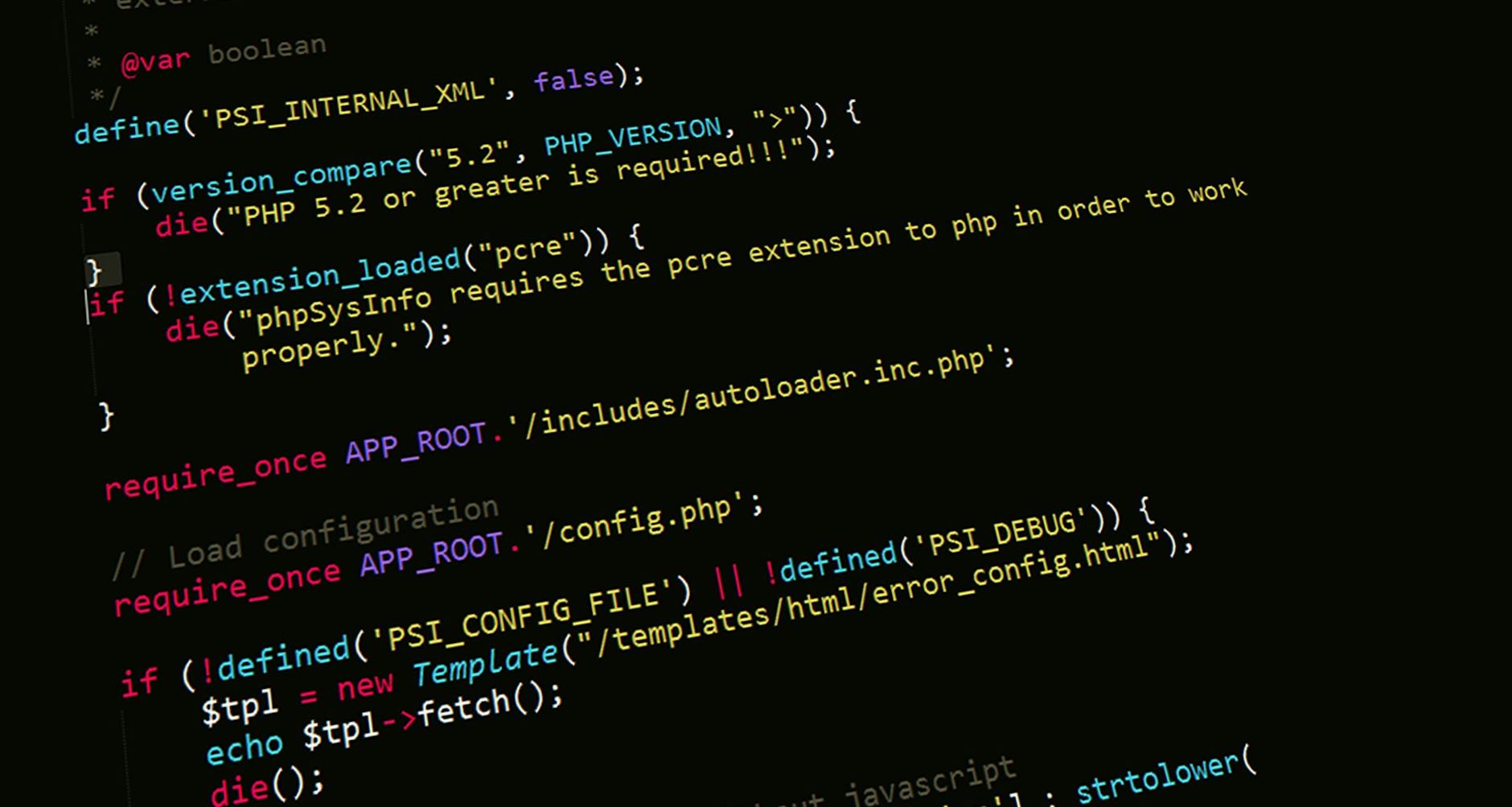
Efficient tools shape developer output, and each platform delivers a distinctive suite.
- Apple Developer Tools: iOS 19 extends APIs for Apple Intelligence, visionOS-inspired interfaces, and advanced Siri actions. Developers gain access via Xcode and rich testing environments. Enhanced beta testing capabilities and analytics help streamline app deployment, outlined at Apple Developer.
- Android Developer Tools: Android 15 introduces SDK improvements, tighter emulator integrations, and updated app sandboxing for privacy and security. Improvements to PDF rendering APIs, camera frameworks, and foldable device management are detailed at Android 15 Developer Features.
Open-source frameworks remain a cornerstone for Android app development, while Apple’s proprietary stacks encourage secure, reliable apps uniform across hardware. Enterprises developing for both platforms benefit from cross-platform tools but may find Apple’s update regularity and stability appealing for mission-critical deployments.
Developers considering advanced AI integration can explore deep learning and automation enhancements on both platforms, taking cues from practical guides on specialized frameworks at DeepSeek Features Explained: A Comprehensive Guide for IT Professionals and Developers.
Integration with Other Devices
Apple’s ecosystem is built on direct device cooperation. Handoff, AirDrop, and Universal Clipboard help professionals switch contexts without interruption. Collaboration across messages, documents, and calls is almost immediate when using Apple hardware.
Android’s integration with Google services, Chromebooks, and smart devices provides strong cross-platform utility. Syncing data and notifications, plus Google’s push for Fast Pair and Nearby Share, delivers seamless transitions within supported environments.
Both systems foster device collaboration, but Apple’s hardware and software oversight yields a more unified experience. Android’s open infrastructure, meanwhile, supports wider device and OEM diversity, appealing to organizations with varied hardware preferences.
For organizations looking to deepen security or improve software management across their device fleet, reviewing updated account and access protocols is advised. More details on best practices for managing security and integration in enterprise environments can be referenced at Terms and Conditions (CGU).
This comparative breakdown provides a clear view of the differences and advantages each mobile platform offers IT, developers, and business professionals regarding ecosystem reliability, security, and development capability.
Camera Systems and AI Photography Features
The camera systems in flagship smartphones have become a major focus for business professionals, developers, and enterprise users. The iPhone 2025 and the latest Android flagships present advanced multi-lens arrays and AI-driven features that not only produce high-quality images but also enhance productivity, compliance, and remote collaboration. Understanding the functional differences between Apple and Android camera systems helps in selecting the right device for workflow needs in diverse enterprise environments.
Both iPhone 2025 and top Android smartphones deliver robust hardware and software for video conferencing and real-time collaboration. On the iPhone, the front-facing TrueDepth camera now uses an upgraded sensor for improved sharpness and color in low-light scenarios, while the latest Apple Intelligence software reduces background noise and auto-frames the subject in real-time. Business users benefit from crisp video during calls, limited distractions in shared spaces, and seamless transitions from mobile to desktop using continuity features.
Android flagships such as the Samsung Galaxy S25 Ultra and Google Pixel 10 Pro also provide advanced front cameras, bolstered by software-driven image optimization and noise suppression. With higher pixel counts and adaptive white balance, Android devices often match or exceed Apple in challenging lighting or mixed environments. Key video conferencing apps—Microsoft Teams, Zoom, and Google Meet—receive deep OS integration on both platforms, providing options for call handoff and live transcription.
Augmented reality (AR) continues to gain ground in industry and enterprise. The iPhone 2025 builds on Apple’s ARKit platform, supporting spatial video calls and on-screen content sharing. Live 3D object scanning, real-time annotation, and LiDAR-driven depth sensing make the iPhone suitable for technical training, prototyping, and virtual site walkthroughs. Apple’s latest product line reinforces its commitment to integrating productivity and creative tools with its powerful camera system.
Android smartphones leverage Google’s ARCore, unlocking similar capabilities: on-the-fly object measurement, markerless tracking, and collaborative workspace overlays. In fields like construction, logistics, and remote support, AR-driven workflows speed up troubleshooting and enable effective remote presence.
For both platforms, built-in AI detects faces, blurs distractions, and maintains focus during group calls. Real-world examples include:
- Remote project management using live AR markups
- Technical support sessions with instant document capture and annotation
- Training sessions streamed with stabilized, noise-free video
Enterprises using Apple devices often benefit from unified device management and security controls, while Android’s broad hardware ecosystem enables flexible deployment based on specialty needs.
For users seeking to maximize their iPhone’s photography and video features for professional use, the resource on advanced iPhone camera features and pro photography tips for 2025 offers step-by-step suggestions suited for work settings.

In summary, the continuous refinement of camera and AI-driven features in both ecosystems supports a variety of business tasks—making remote work, on-site collaboration, and technical documentation more efficient and professional than ever before.
Pricing, Support, and Longevity for Enterprise
Business investment in smartphones requires attention to price tiers, ongoing support, and projected longevity. These factors shape everything from budget planning to device lifecycle management. Selecting the appropriate iPhone or Android flagship means considering not only the upfront cost but also long-term support, device retention periods, and total cost of ownership for organizational operations.
Price Tiers and Upgrade Cycles

The average initial price for enterprise-grade smartphones continues to rise. Recent data indicates the mean cost for AI-enabled business smartphones in the United States hovers near $1,100 and is expected to reach $1,400 within the decade [source].
Apple positions the iPhone 2025 at the higher end of the flagship market, with Pro models and higher-tier configurations commanding the greatest premium. Android alternatives, such as Samsung’s Galaxy S25 Ultra or Google’s Pixel 10 Pro, offer competitive rates; however, advanced models with greater storage and memory options can match or exceed iPhone pricing. For more context, explore a detailed analysis of device choices for business at Best Smartphones for Business.
Enterprises often select devices based on multi-year procurement cycles. Typical refresh intervals fall between 24 and 36 months, with flexibility around major OS or hardware upgrades. Large-scale acquisition programs sometimes benefit from bulk pricing or trade-in discounts, which can help lower the cost per user over the upgrade cycle.
Customer Support and Repair Policies
Reliable, fast support is essential for organizations with mission-critical mobile platforms. AppleCare for Enterprise provides organizations with prioritized support, next-business-day device replacement, and managed device enrollment [AppleCare Professional – Enterprise Support]. This coverage reduces downtime and makes large-scale iPhone deployments more predictable for IT managers. Apple’s broad retail and service network also streamlines repair and loaner processes, a clear advantage in urgent scenarios.
Android enterprise support policy varies by manufacturer. Samsung and Google offer premium service packages for flagship models, including expedited repairs, technical assistance, and on-site servicing for enterprise clients. Extended warranties and support plans, like Samsung Care+ for Business, pair well with high-value Android deployments. Enterprises should compare policy terms, response time, and repair logistics before scaling up an Android device fleet. External coverage options are also available through third parties, as outlined at Securranty Enterprise Mobile Protection.
Policy alignment with internal business guidelines is key. Internal strategies for fleet management, security, and asset tracking require dependable support partners. For enterprises new to structured mobile device management, guidance on selecting strong support platforms can be found in resources like how to choose the right platform for selling digital products in 2025.
Device Longevity and Total Cost of Ownership
The rate of device replacement directly impacts ongoing capital and operational expenditures. Both iPhone and Android flagships offer long hardware support windows—usually five years or longer for key models—in line with evolving enterprise demands. Apple delivers predictable iOS update cycles and maintains a reputation for strong residual device value.
Android longevity depends on manufacturer update policies and hardware durability. Google’s Pixel and Samsung’s flagship lines now offer extended update guarantees but may face variability with non-premium hardware.
Total cost of ownership (TCO) includes:
- Initial device price
- Cost of warranties or support plans
- Repair and replacement rates
- Software licensing (if needed)
- Depreciation and trade-in credits
iPhones typically retain higher trade-in values throughout their lifecycle, lowering TCO when part of a regular upgrade or replacement cycle. Android values differ, but can be bolstered by selective model choice and managed resale programs. Detailed comparisons of popular business smartphones, including price-performance ratios, are discussed in Best Business Phones: Top Models for Work in 2025.
Device fleet management systems support both Apple and Android platforms, offering features like asset tracking, remote wipe, and deployment analytics for blended environments.
Enterprise Fleet Management and Compliance
For organizations managing dozens or thousands of devices, fleet management tools must support hardware audits, security policy enforcement, and compliance mandates. Apple Business Manager and Android Enterprise Management enable centralized oversight with nuanced control over updates, user permissions, and app installations.
Repair policy compliance is often necessary in regulated industries. Clarity around end-user repairs, authorized service partners, and device disposal impacts risk and overall organizational security. For policy development and regulatory considerations related to enterprise smartphone deployment, see best practices in Enterprise Mobile Technology Policy.
Leaders planning multi-year investments benefit from detailed records and proactive service agreements, aligning technical needs with practical budgetary constraints. For further insight into tech investments and selecting stable sales platforms, consult the guide on how to choose the right platform for selling digital products in 2025.
In summary, the strategic evaluation of pricing, support, and device longevity is central to optimizing total cost of ownership for enterprise smartphone deployments. The choice between iPhone and leading Android devices should reflect both technical requirements and operational strategy.
Conclusion
Both the iPhone 2025 and leading Android flagships deliver strong hardware, well-integrated software, and extended support that meet the needs of professionals and businesses. Each platform stands out for different reasons. Apple offers predictable updates, unified device management, and high residual value, making it a prudent choice for IT and business environments with established workflows. Android provides flexibility, broad device selection, and features that adapt to specialized or mixed-use scenarios.
Professionals focused on security and sustained productivity will find reassurance in Apple’s consistent update cycles. Organizations that prioritize device customization and diverse deployment will appreciate the options within the Android portfolio. Developers should weigh each platform’s toolsets and update patterns to match their project requirements, while electronics enthusiasts may prefer Android’s experimental form factors and ongoing innovation.
The best decision reflects both operational goals and technical needs. For further help with setting up a productive workspace or maximizing your device’s capabilities, the comprehensive guide at Complete Home Office Setup Guide: Essential Gear for Remote Workers – 2025 Edition provides tailored advice for professionals across sectors.
Thank you for reading. Your perspective can help others—share your experience or feedback to support informed choices in future device selection.

